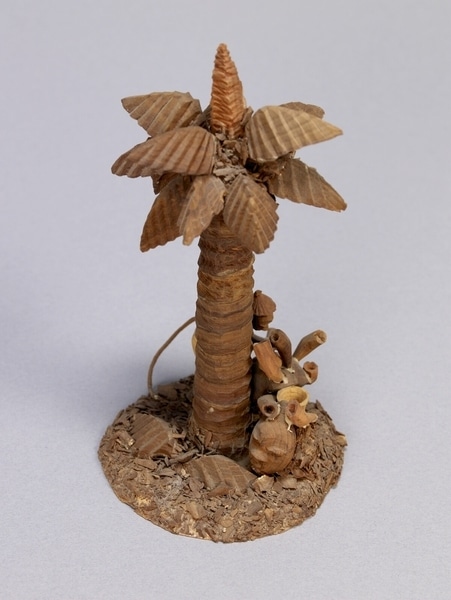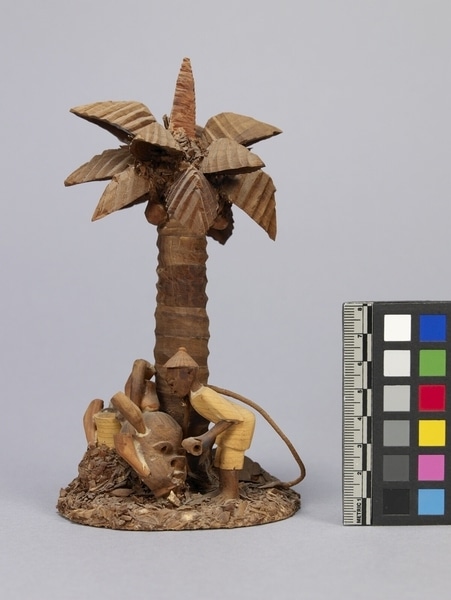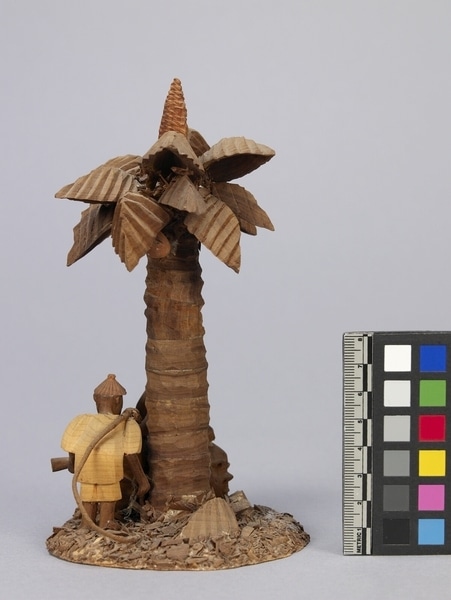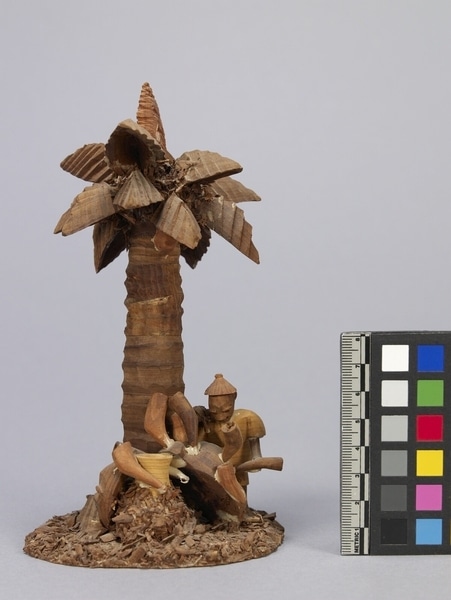Thorn Carving Item Number: Af365 from the MOA: University of British Columbia




Description
Palm tree on round platform covered with wood chips. Figure representing a man is holding a rope over his right shoulder while bending down to a ritual mask at a shrine. Mask holds four horns and a small vessel. Second mask leaning against the mound of wood chips has two horns and a vessel on top. Man is wearing knee-length trousers, a short-sleeved shirt, and a round hat. Palm tree, masks, platform, rope, four horns, head, arms, and legs are dark brown. Pants, trousers, and larger vessels are light yellow-brown. Hat, three horns, small vessel, and top of palm tree are light red-brown.
History Of Use
Thorn carvings are miniatures depicting scenes from Nigerian life. This type of carving began circa 1930. Thorns vary in size. They can be as large as 12.7 cm. long and 9.6 cm. wide. They are comparatively soft and easily carved. The light yellow-brown thorn and the dark brown thorn come from the Ata tree; the light red-brown thorn comes from Egun trees. The parts are glued together with viscous paste made from rice cooked with water. They are carved by men.
Narrative
Represents a ritual scene of a mask by a palm tree.
Cultural Context
craft; tourist art
Item History
- Made in Nigeria before 1972
- Collected during 1972
- Owned by Andrew Stewart and Jessie Stewart before February 8, 1980
- Received from Andrew Stewart (Donor) and Jessie Stewart (Donor) on February 8, 1980
What
- Name
- Thorn Carving
- Identification Number
- Af365
- Type of Item
- carving
- Material
- egun thorn, wood, stain, rice adhesive and atum thorn
- Manufacturing Technique
- carved and glued
- Overall
- height 18.7 cm, diameter 9.9 cm
Who
- Culture
- Yoruba
- Previous Owner
- Andrew Stewart and Jessie Stewart
- Received from
- Andrew Stewart (Donor) and Jessie Stewart (Donor)
Where
- Holding Institution
- MOA: University of British Columbia
- Made in
- Nigeria
When
- Creation Date
- before 1972
- Collection Date
- during 1972
- Ownership Date
- before February 8, 1980
- Acquisition Date
- on February 8, 1980
Other
- Item Classes
- carvings & sculpture
- Condition
- good
- Accession Number
- 0590/0051